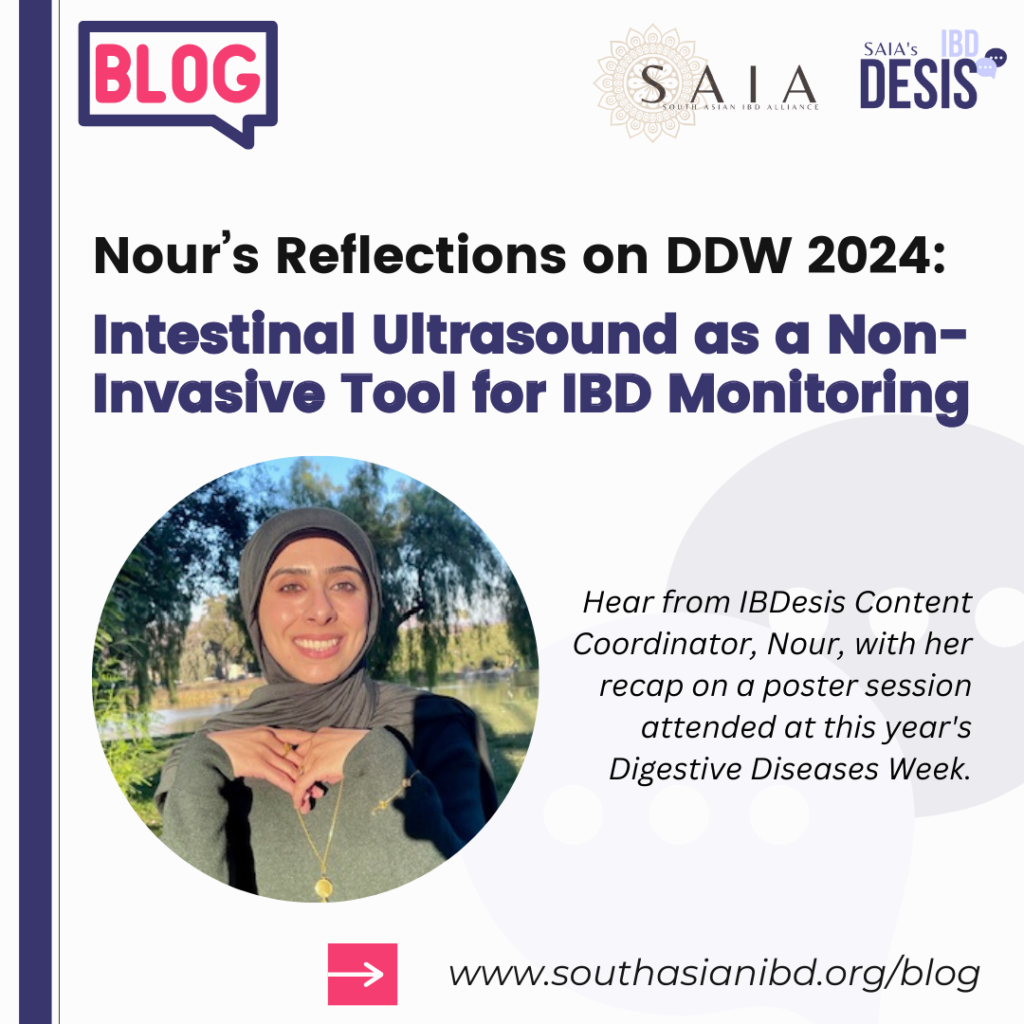
Written by: Nour Al-Timimi
In the poster session at DDW 2024, I learned about a new fascinating method that can help providers and patients predict relapse from the poster titled “Intestinal Ultrasound is Predictive of Disease Relapse in Asymptomatic Inflammatory Bowel Disease Patients.” The study evaluated the effectiveness of intestinal ultrasound (IUS) in predicting IBD relapse in asymptomatic patients and guiding adjustments in treatment to more effectively control disease activity.
The study included 40 asymptomatic IBD patients who were selected from a registry that the authors of the study maintained at their institution. They were interested in looking at patients who did not have any symptoms of IBD but had signs of active inflammation on the IUS assessment.
On the IUS exam, active inflammation was measured via parameters, including bowel wall thickness (BWT) of more than 3mm and color Doppler signal (CDS). The study sought to understand how these IUS parameters predict an increase in IBD symptoms in patients.
The study concluded that silent inflammation identified on IUS was associated with a 20% rate of disease relapse within 3.5 months. The study’s findings indicated that IUS might be a good test to proactively identify silent inflammation in patients BEFORE the symptomatic relapse happens and start working together to come up with a reasonable plan to escalate dosing and/or change medications. Based on the IUS findings of the presence of asymptomatic disease activity, 28 patients decided to make changes to their treatment regimen, which is an important number to understand patient trust in IUS to monitor their disease activity.
Based on this poster, I felt that the IUS as an additional testing modality for determining inflammation or relapse is promising. As this poster indicated, inflammation can occur, and the disease can progress without us knowing or experiencing symptoms. This is why regular monitoring is so important, and as this study shows, IUS can be effective in identifying inflammation, even in the absence of symptoms.
While it does not substitute for a colonoscopy or other imaging modalities or testing, IUS does provide patients and their providers with a powerful, non-invasive tool to monitor disease activity. It can be helpful for patients who are awaiting colonoscopy and may not want to do a bowel prep. It can potentially also be more cost-friendly in emerging nations where colonoscopies and MRIs and CT scans are expensive and therefore difficult to access.
The current data set of this study is limited – researchers only included a small number of patients and evaluated more Crohn’s Disease patients than patients with Ulcerative Colitis or IBD – Unclassified. As more patients are evaluated from this registry and other databases in the future, we will have a better understanding of role of IUS as a testing method.
Having said that, I am excited about the future application of IUS as a powerful monitoring technique in our toolkit to detect inflammation and help our doctors to act proactively to prevent a relapse in symptoms.
